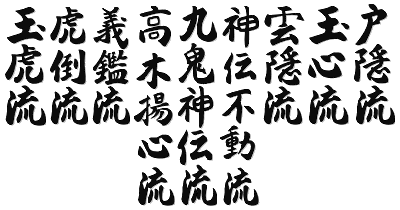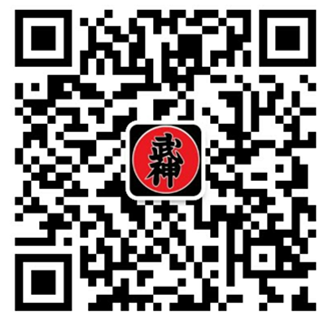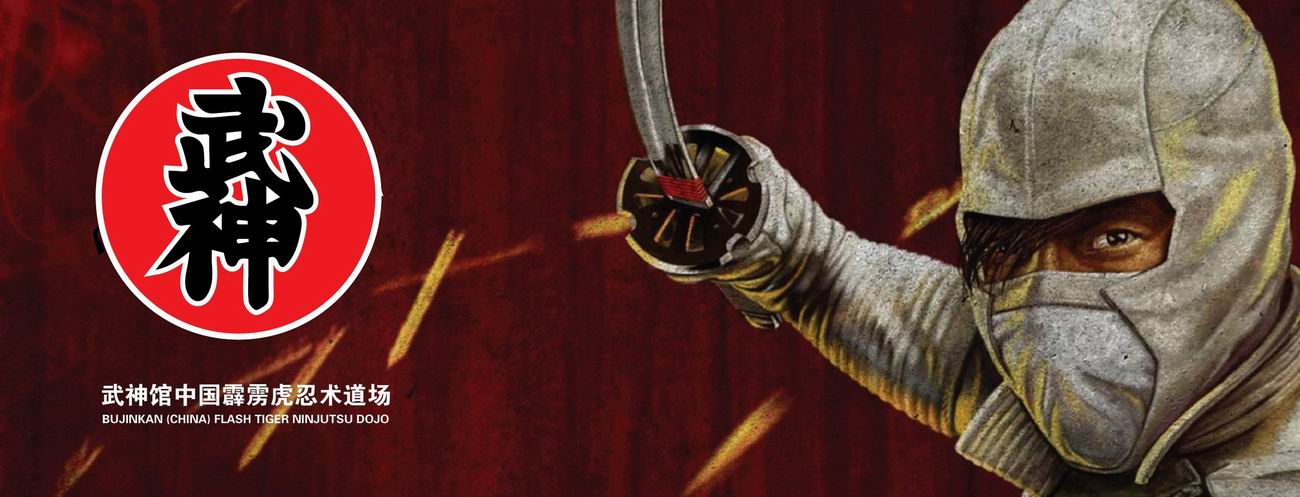The Bujinkan Dōjō has a series of
kyū (grades) below the level
of shodan. The new student starts at mukyu
("without grade") and progresses from kukyu (9-kyu),
the lowest rank, to ikkyu (1-kyu), the highest.
Unranked (mukyū) practitioners wear white belts, kyu
grade practitioners wear green belts, and those with ranks
of shōdan and above wear black belts. In some dojos
kyu-level practitioners – especially in children's classes –
wear colored belts, though the actual color of the belt
varies from place to place. In Japan it was once customary
for kyu-level men to wear green belts over a black gi and
women to wear red belts over a purple gi, but this practice
has largely been abandoned. Both male and female Bujinkan
practitioners now wear green belts at most Japanese dojos.
Outside Japan, some countries still follow the custom of
green for men and red for women, while others use green for
all practitioners.
There are
fifteen dan grades in the Bujinkan, although only ten are
formally recognised (10th dan has five levels within it).
With the exception of fifth dan (see below) there are no
fixed criteria for attaining each grade. Different dojos
have their own approaches based on the cultural environment
and the instructor’s preference.
Typically the
study of tenchijin ryaku no maki (arts of heaven,
earth and man) guides progression from 9-kyu to shodan (1st
dan) and comprises all the
fundamental techniques required for advanced study
thereafter. Until 4th dan the student is expected to focus
on developing strong foundations and to perfect their form.
At 5th dan the training focus changes to becoming more
responsive and responding naturally in dynamic &
increasingly challenging situations.
In order to attain fifth dan (godan),
fourth dan practitioners must submit to a sakki (or
godan) test before the sōke to establish that
they are able to sense the presence of danger and evade it,
which is considered a fundamental survival skill. After
passing this test, a practitioner is considered
to be under the protection of the Bujin, or Guiding
Spirits, and is entitled to apply for a teaching license (shidōshi
menkyo). A shidōshi (士道師)
(person ranked from fifth to tenth dan) is entitled to open
their own Bujinkan dōjō and grade students up to
fourth dan. A practitioner between first dan and fourth dan
may become a licensed assistant teacher (shidōshi-ho)
if backed by and acting under the supervision of a shidōshi. In the Bujinkan, a person ranked eighth dan or
higher is often referred to as a
shihan.
The practitioner's level is
displayed by the color of the art's emblem, called wappen
(ワッペン)
inscribed with the kanji "bu"(武)
and "jin" (神).
There are four kinds of wappen (9 to 1 kyū, 1
to 4 dan, 5 to 9 dan, and 10 to 15 dan),
sometimes augmented with up to four silver, gold or white
stars (called hoshi) above or around the emblem,
representing the individual ranks.
In addition to the kyu/dan system, a
few practitioners have earned
menkyo kaiden "licenses of
complete transmission" in individual schools. These
establish that the master practitioner has learned all that
there is to learn about the particular lineage. Whereas the
kyu/dan ranks are often made public, those who have earned
menkyo kaiden rarely divulge their status, sometimes
even being reluctant to recognize their actual dan ranking
to outsiders.




